Menu
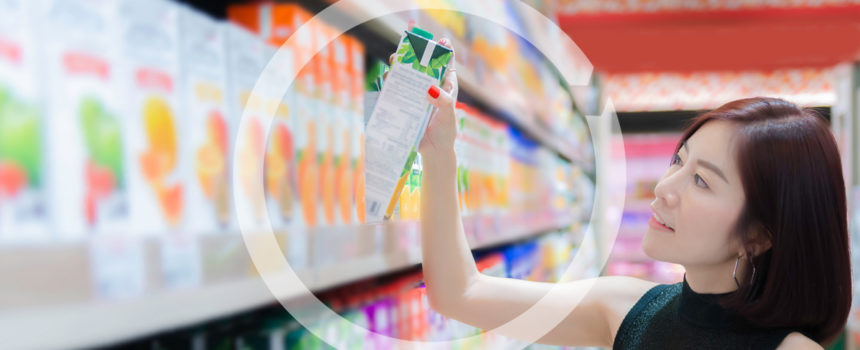
By Leslie Wood, Chief Research Officer, NCSolutions, and Amy Crooks, Senior Analyst, Research & Development, NCSolutions
We recently had the chance to share our ongoing work on brand loyalty at Mobile Marketer Association’s Great Debate on Brand Growth. While there are some schools of thought that emphasize the value of mass marketing and question the importance of brand loyalty, NCS has been working on bodies of research over our past 11 years in business that dispel this myth. On the contrary—brand loyalty does matter. In fact, it matters a lot.
One recent proof point is in the way that brand loyalty has dramatically shifted since the onset of the COVID-19 pandemic. Since March, consumer CPG spending has remained elevated as consumers eat and spend more time at home: 2020 U.S. grocery sales were 19% higher year-over-year. In this way, 2020 has represented an enormous period of change for consumers, leading to their trying new products and broadening their repertoire. Normally, consumers’ brand loyalty can change dramatically (thanks to brand trial and experimentation) during major life events—like a marriage or the birth of a baby. But this past year, the pandemic has been the equivalent to a new life stage. The entire world has needed to rethink how we work, eat, play, and learn. Due to stockouts and Americas eating more at home, consumers have tried new brands, and in some cases have converted into repeat buyers.
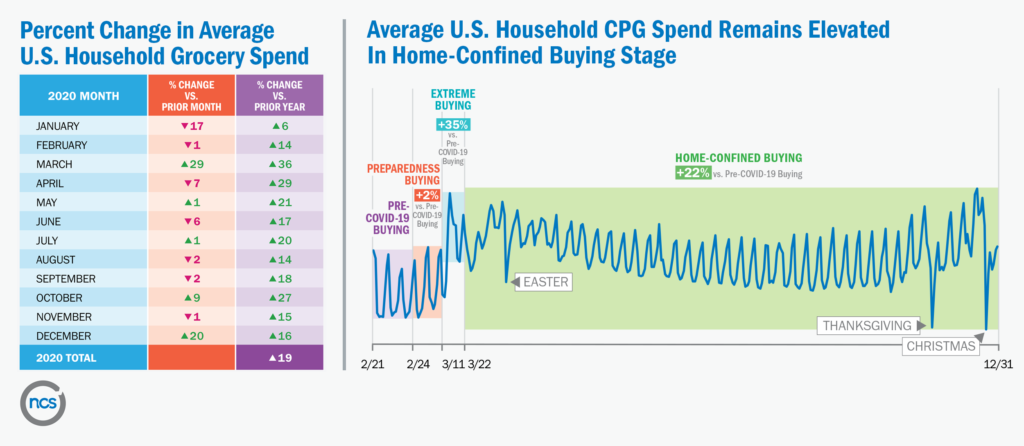
Our team analyzed brand share for 50 different CPG brands from a variety of categories over time—both before and during the pandemic. Out of these 50 brands, 20 had declining brand shares prior to the pandemic, 17 were flat, and 13 were growing. Seventy-seven percent of growing brands had above or on-trend brand shares—meaning that they continued to grow at the same or a greater rate during the pandemic. Even among the declining brands, 65% continued on the same trend or improved their trajectory. What this means is that overall, brand share improved for more of these brands throughout 2020.
You might wonder—how could this be? Clearly, not every brand can gain share, even in a growing market. But these 50 brands are those that tend to be heavily marketed with more sophisticated strategies, and that tend to consistently advertise.
Now, what does this mean for brand loyalty? Generally speaking, an increase in brand share is often a result of increased loyalty and repeat buying.
Take this one example of a packaged breakfast food brand. The brand had been building a more and more loyal base across the year and a half leading up to the pandemic. At the beginning of the pandemic, the brand enjoyed a surge of new buyers, but new buyers only played a minor role in fueling that brand’s growth. Instead, sales from loyals contributed the most to dollar growth and ultimately supported this brand during the fickle nature of 2020. Some brands that are doubling down on advertising to their repeat buyers have been successful in moving them up the loyalty ladder, turning switchers into loyals.
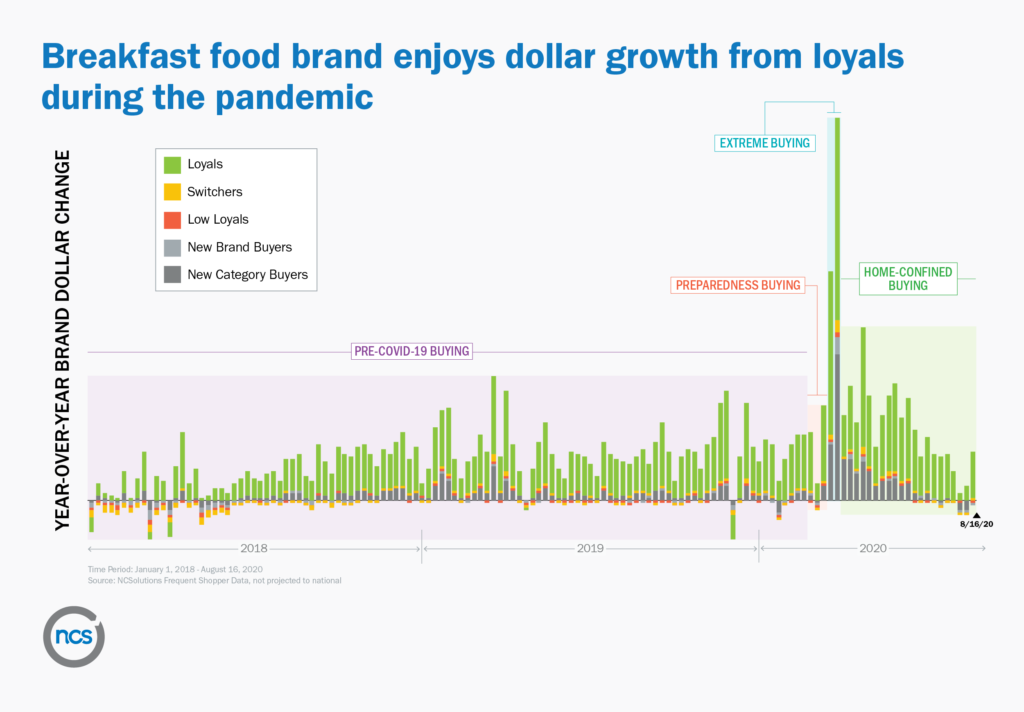
We have broken down these brand loyalty changes for 50 brands. To take this research one step further, we are performing additional analysis to quantify at a high level how share of dollars from loyal buyers, brand switchers, non-loyals and new buyers have contributed to growth across these 50 brands. This demonstrates how brand loyalty has shifted since March—and that in the end, loyalty does in fact matter.
It is worth noting that brand loyalty is a challenging metric to track, especially in categories where consumers have a large repertoire of brands, like cookies for example, where people tend to be loyal to a small group of brands. To more accurately measure this loyalty, we are quantifying loyalty via average depth of repeat—which measures the number of consecutive times a consumer bought a brand when purchasing in a particular category. Thus, if you always buy 2 boxes of cereal or 3 kinds of cookies, you can be loyal to all of them. A benefit to this metric is that it is very predictive of how a consumer spends on brands in the future.
Stay tuned for the high-level findings of this analysis, which we’ll present later in the year. For more on brand loyalty in the interim, check out the work we did earlier in the pandemic, Loyalty in the Time of COVID.
Subscribe for Updates
GET INSIDE THE MINDS OF CPG BRAND MARKETERS
Learn about their data-fueled strategies
SNAG YOUR COPY OF THE REPORT TODAY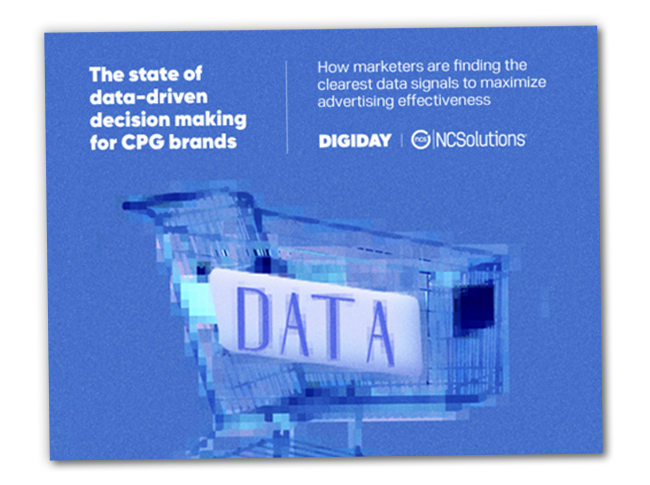
WONDERING HOW CONSUMERS RESPOND TO INFLUENCER MARKETING?
See how creating content drives results
DOWNLOAD YOUR COPY NOW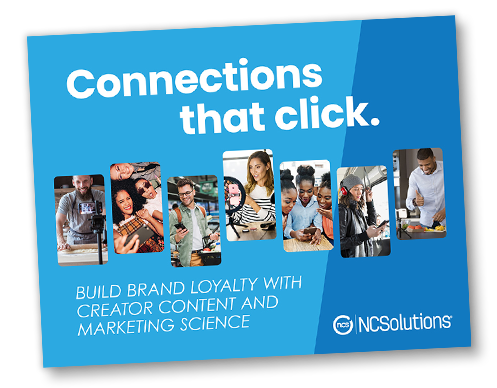
WANT TO KNOW MORE ABOUT HEALTH AND ECO-MINDED SHOPPERS?
Get CPG insights to engage your buyers
ACCESS THE E-BOOK TODAY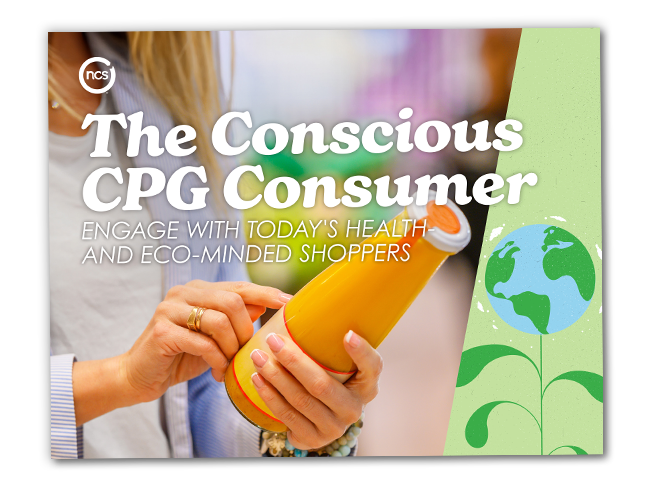


.png)
.png)

